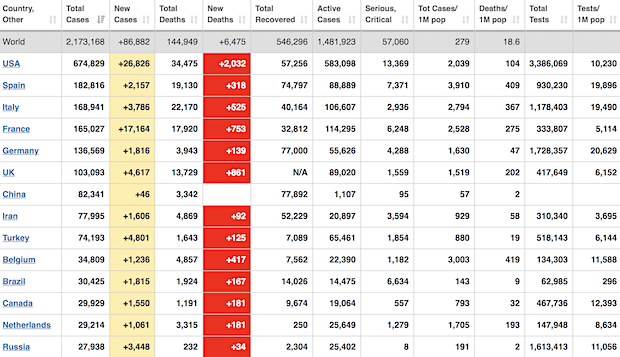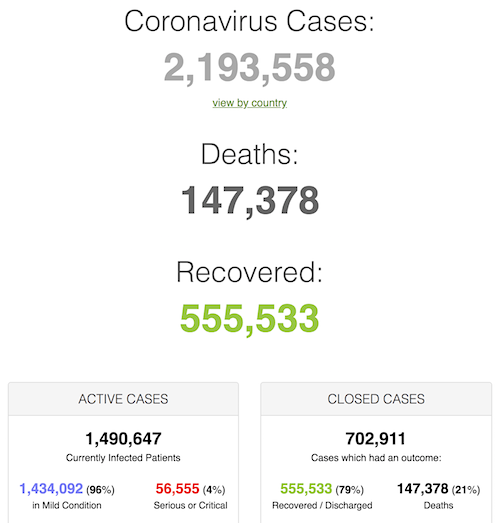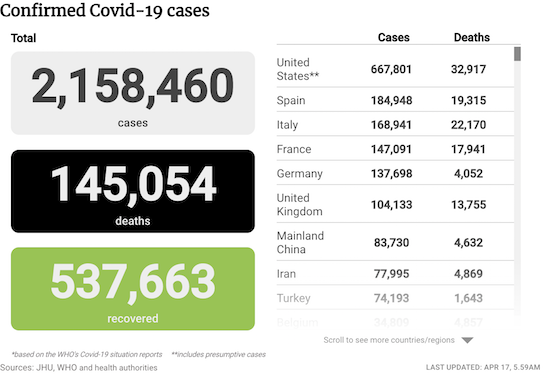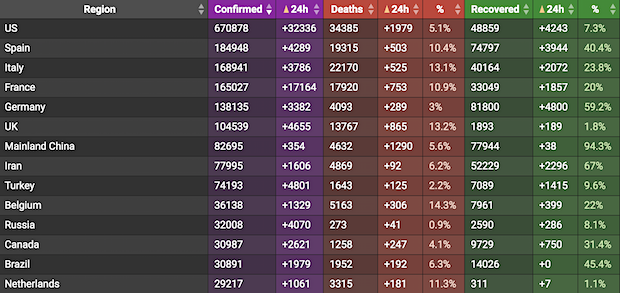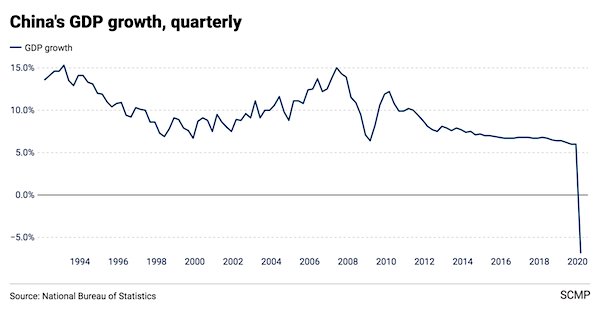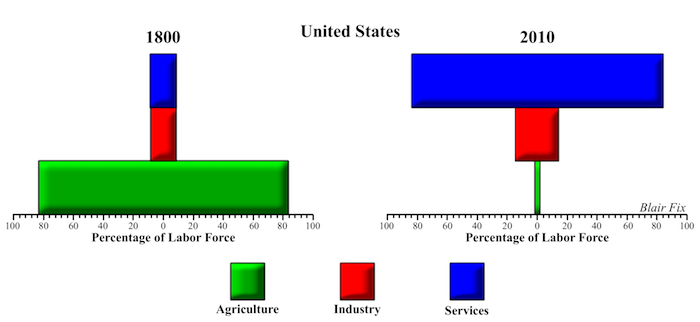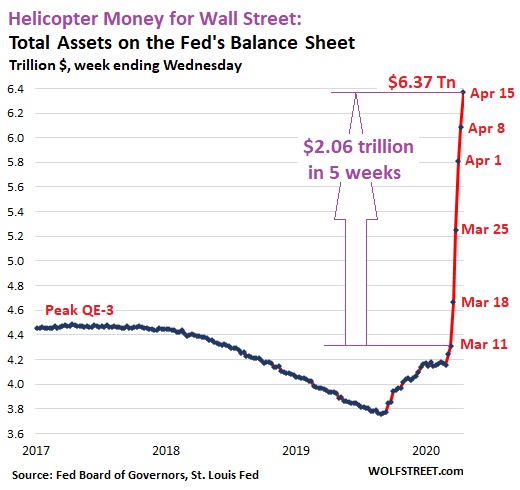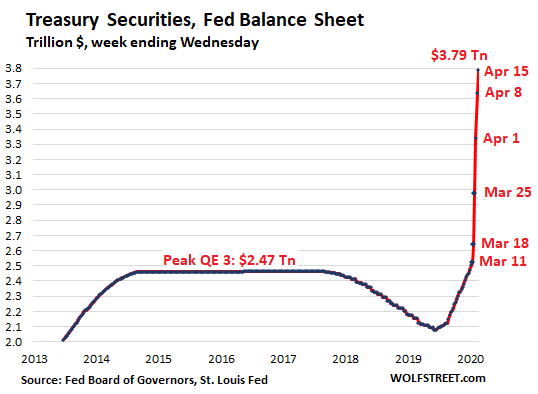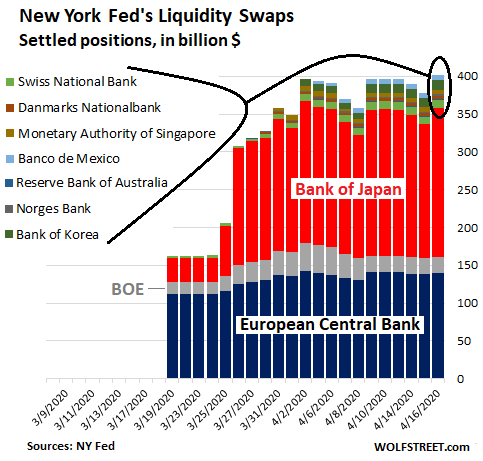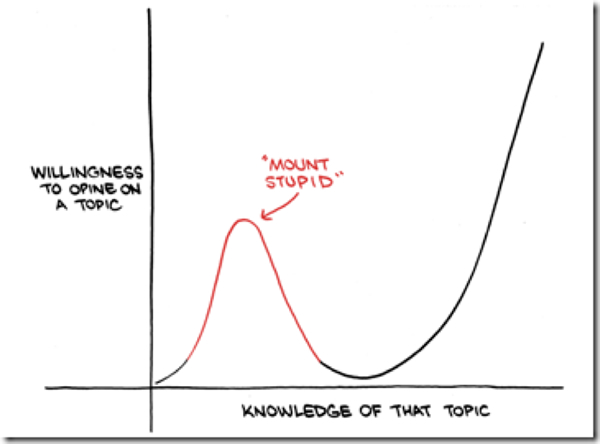
Workmen next to the screws of the RMS Titanic at Belfast shipyard, 1911

Just the other day, I watched an episode of Anthony Bourdain’s Parts Unknown series he did for CNN, in which he visited Beirut and called it his favorite city in the world, one which he kept coming back to whenever he could. Maybe it’s good that he can’t see anymore what happened yesterday.

Numbers look somewhat mixed. New cases are not too bad, but deaths up are sharply, let’s hope that’s because they weren’t reported over the weekend.

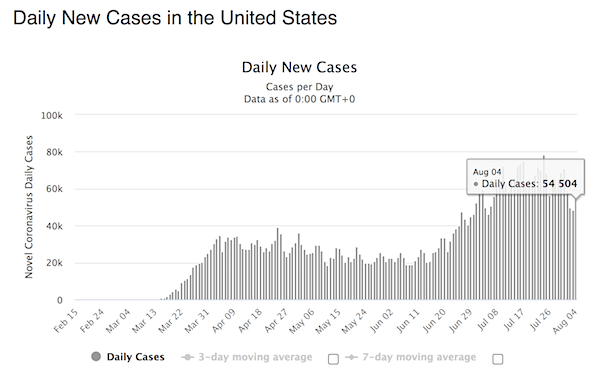
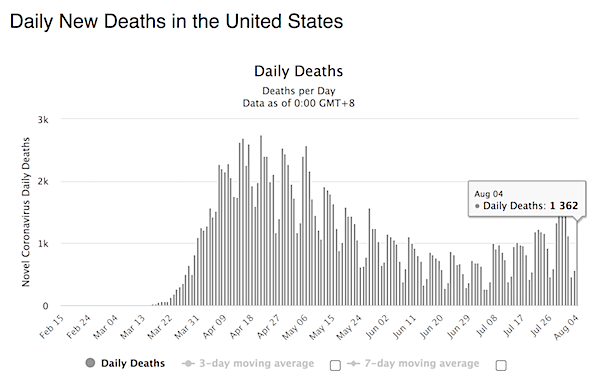

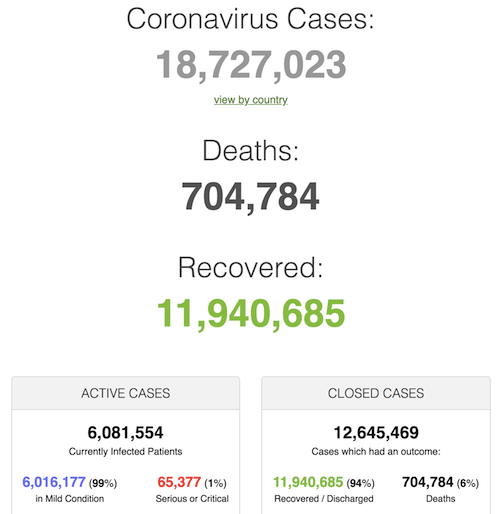

Yaneer
The extent and severity of the long term respiratory complications of covid-19 infection remain to be seen, but emerging data indicate that many patients experience persistent respiratory symptoms months after their initial illnesshttps://t.co/rZw48LHtyQ
— Yaneer Bar-Yam (@yaneerbaryam) August 5, 2020

Australia was doing fine. It no longer is.
• Victoria Records Australia’s Worst Day Of COVID19- 15 Deaths, 725 New Cases (G.)
Wednesday marked Victoria’s most devastating day of Covid-19 cases and deaths, with a man in his 30s among 15 people who died overnight including many from aged care, and 725 new cases of the virus identified. Three men and a woman in their 70s, three women and a man in their 80s, and a woman in her 90s were among the deaths. Twelve deaths were linked to outbreaks in aged care. There are 538 Victorians in hospital, 42 of them in intensive care. The premier, Daniel Andrews, confirmed the man in his 30s – who is the youngest person to die from Covid-19 in Australia – was not a healthcare worker. There are currently more than 700 health workers with active cases of the virus. He said he could not provide further details about those who died without permission from families.
“Can I send my heartfelt condolences and sympathies to each of those families,” Andrews said on Wednesday. “This will be a terrible time and any and all support we can provide to you we will, and we are with you in this very difficult time.” The deputy chief health officer, Prof Allen Cheng, said when there was an outbreak in aged care, an assessment was made as to whether residents would be better off in hospital or aged care. But sending many patients to hospital could not continue indefinitely because “everything has a limit”. “The number of people in hospital has increased primarily but not only because of transfers from aged care and a lot of those transfers are not for clinical [reasons], not because they’re sick but because of infection control reasons,” Cheng said.

Everyone tested everyday with a non-invasive less-sensitive testing method.
• Failing the Coronavirus-Testing Test (Harvard)
At the moment, the United States has no semblance of public-health testing” for the coronavirus, says Michael Mina, an assistant professor of epidemiology at both Harvard Medical School and the Harvard T. H. Chan School of Public Health. What does Mina—an expert in viral testing protocols—mean by that? Current tests for active infection with SARS-CoV-2 are highly sensitive—but most are given to suspected COVID-19 patients long after the infected person has stopped transmitting the virus to others. That means the results are virtually useless for public-health efforts to contain the raging pandemic. These PCR (polymerase chain reaction) tests, which amplify viral RNA to detectable levels, are used by physicians, often in hospital settings, to help guide clinical care for individual patients. In general, members of the public have not had access to such tests outside clinical settings, but even if they did, would find them too expensive for frequent use.
Furthermore, such tests detect tiny fragments of viral RNA even after the patient has recovered. Mina says that means “the vast majority of PCR positive tests we currently collect in this country are actually finding people long after they have ceased to be infectious.” In that sense, a positive result can be misleading, because the results can’t be relied on to guide the epidemiological efforts of public-health officials, which are focused on preventing transmission and controlling outbreaks: “The astounding realization is that all we’re doing with all of this testing is clogging up the testing infrastructure,” with results arriving a week or more after tests are administered, “and essentially finding people for whom we can’t even act because they are done transmitting.” In fact the testing backlog is so dire, and so “absolutely horrendously useless as system for public-health surveillance” that Mina believes the United States should at the very least throw away the millions and millions of samples that are waiting to be tested—and perhaps even halt the current testing regime and just start over.
“We need to change the whole script of what it means to test people,” he says. “In our country, we have always assumed that testing belongs in the clinical sphere, in the diagnostic sphere, and has to be run by laboratories or diagnosticians. The result is that we have a system for coronavirus testing…which is flailing, with raging outbreaks occurring.” What the country needs instead are rapid tests, widely deployed, so that infectious individuals can be readily self-identified and isolated, breaking the chain of transmission. To do that, Mina says, everyone must be tested, every couple of days, with $1, paper-based, at-home tests that are as easy to distribute and use as a pregnancy test: wake up in the morning, add saliva or nasal mucous to a tube of chemicals, wait 15 minutes, then dip a paper strip in the tube, and read the results.
Such tests are feasible—a tiny company called E25Bio, and another called Sherlock Biosciences (a startup spun out of Harvard’s Wyss Institute for Biologically Inspired Engineering and the Broad Institute in 2019) can deliver such tests—but the they have not made it to the marketplace because their sensitivity is being compared to that of PCR. But Mina says that is beside the point. “Imagine you are a fire department,” he says, “and you want to make sure that you catch all the fires that are burning so you can put them out. You don’t want a test that’s going to detect every time somebody lights a match in their house—that would be crazy: you’d be driving everywhere and having absolutely no effect. You want a test that can detect every time somebody is walking the streets with a flame thrower.”
FOR PUBLIC-HEALTH PURPOSES, speed and frequency of testing are vastly more important than sensitivity: the best test would actually be less sensitive than a PCR test. As Mina explains, when a person first becomes infected, there will be an incubation period when no test will reveal the infection, because the viral loads are so low. About “three to five days later, the PCR test will turn positive, and once that happens the virus is reproducing exponentially in a very predictable fashion.” At that point, critically, “even if a rapid test is 1,000 times less sensitive than a PCR test,” Mina says, the virus is increasing so rapidly that the test “will probably turn positive within eight to 15 or 24 hours.

First, you pay for the research; then you play for the product.
• Big Pharma Giants GSK, Sanofi Get $2.1 Billion to Develop COVID Vaccine (MPN)
The Trump administration’s “Manhattan project” for a COVID-19 vaccine has topped its biggest award given only two weeks ago to Novavax, Inc with its latest grant of $2.1 billion to pharmaceutical giant, GlaxoSmithKline, and partner Sanofi Pasteur to “speed up clinical development and manufacturing” of its recombinant vaccine candidate for the novel coronavirus. The deal clocks in at over $400 million more than the program’s previous investment of $1.6 billion earlier this month. Most of the GSK/Sanofi grant will be used for clinical trials and the rest to “scale-up and delivery” of 100 million vaccine doses destined for the U.S. population. The deal also offers the USG an option to buy a “supply of 500 million doses over the long term.”
This latest infusion of tax-payer money into Big Pharma’s hands by the Trump administration comes on the heels of the rumored failure of an early vaccine candidate. Moderna’s SARS-CoV-2 mRNA-1273 vaccine has received nearly a billion in federal funds, but recent reports of the company’s CMO, Tal Zaks, selling almost all of his shares as the vaccine is set to begin late-stage trials have sparked speculation that the “pre-fusion stabilized Spike protein” vaccine is dead in the water. Neither Novavax or Moderna, however, have ever had a single product go to market despite years in the business. GSK and Sanofi, in contrast, have plenty. Sanofi produces an FDA-approved flu shot and GSK, producer of some of the most recognizable pharmaceutical brand names like Binaca and Paxil, also produced a flu vaccine for the H1N1 “bird flu” called Pandermix.
Nevertheless, the fact that these large pharmaceutical firms have had some market success doesn’t necessarily mean anything in terms of the safety of their vaccines. GSK’s Pandermix turned out to induce narcolepsy and after studies confirmed the association between the drug and the chronic sleeping disorder, it has not been used since.

Sometimes I feel like an HCQ advocate. But I really only thought it was crazy to label it lethal after 200 million people had been given chloroquine over 65 years without even a hint of mortality risks.
• An Effective COVID Treatment the Media Continues to Besmirch (RCP)
On Friday, July 31, in a column ostensibly dealing with health care “misinformation,” Washington Post media critic Margaret Sullivan opened by lambasting “fringe doctors spouting dangerous falsehoods about hydroxychloroquine as a COVID-19 wonder cure.” Actually, it was Sullivan who was spouting dangerous falsehoods about this drug, something the Washington Post and much of the rest of the media have been doing for months. On May 15, the Post offered a stark warning to any Americans who may have taken hope in a possible therapy for COVID-19. In the newspaper’s telling, there was nothing unambiguous about the science — or the politics — of hydroxychloroquine: “Drug promoted by Trump as coronavirus game-changer increasingly linked to deaths,” blared the headline.
Written by three Post staff writers, the story asserted that the effectiveness of hydroxychloroquine in treating COVID-19 is scant and that the drug is inherently unsafe. This claim is nonsense. Biased against the use of hydroxychloroquine for COVID-19 — and the Washington Post is hardly alone — the paper described an April 21, 2020, drug study on U.S. Veterans Affairs patients hospitalized with the illness. It found a high death rate in patients taking the drug hydroxychloroquine. But this was a flawed study with a small sample, the main flaw being that the drug was given to the sickest patients who were already dying because of their age and severe pre-existing conditions. This study was quickly debunked. It had been posted on a non-peer-reviewed medical archive that specifically warns that studies posted on its website should not be reported in the media as established information.
Yet, the Post and countless other news outlets did just the opposite, making repeated claims that hydroxychloroquine was ineffective and caused serious cardiac problems. Nowhere was there any mention of the fact that COVID-19 damages the heart during infection, sometimes causing irregular and sometimes fatal heart rhythms in patients not taking the drug. To a media unrelentingly hostile to Donald Trump, this meant that the president could be portrayed as recklessly promoting the use of a “dangerous” drug. Ignoring the refutation of the VA study in its May 15 article, the Washington Post cited a Brazil study published on April 24 in which a COVID trial using chloroquine (a related but different drug than hydroxychloroquine) was stopped because 11 patients treated with it died. The reporters never mentioned another problem with that study: The Brazilian doctors were giving their patients lethal cumulative doses of the drug.

Time to lose Fauci. But he’ll stay.
• Authors of Pro-HCQ Study Defend Their Work From Fauci Attack(BLP)
The doctors responsible for a controversial pro-hydroxychloroquine study are defending their work after it was attacked by National Institute of Allergy and Infectious Diseases (NIAID) director Dr. Anthony Fauci at a recent Congressional hearing. Drs. Adnan Munkarah and Steven Kalkanis wrote in an open letter that “a whole scientific field exists in which scientists examine how a drug is working in the real world to get as best an answer as they can as soon as possible,” which Dr. Fauci did not acknowledge in his complete dismissal of their work. Munkarah works as the chief clinical officer of the Henry Ford Health System while Kalkanis works as the chief academic officer for the system. They are standing by their findings and refusing to buckle under the political pressure.
“Our promising Henry Ford treatment study should be considered as another important contribution to the other studies of hydroxychloroquine that describes what the authors found in our patient population,” Munkarah and Kalkanis wrote. “We — along with all doctors and scientists — eagerly support the need for randomized clinical trials.” “Unfortunately, the political climate that has persisted has made any objective discussion about this drug impossible, and we are deeply saddened by this turn of events,” they wrote, noting they they believe that the science should “speak for itself.” “To that end, we have made the heartfelt decision to have no further comment about this outside the medical community,” the doctors said.
Munkarah and Kalkanis call for more research to take place but believe that their findings could save lives and should not be discounted. “As an early hot spot for the COVID-19 pandemic, we have seen and lived its devastating effects alongside our patients and families,” Munkarah and Kalkanis wrote. “Furthermore, it is not unusual that results from such studies vary in different populations and at different times, and no one study can ever be considered all by itself,” they added. Big League Politics reported on how Dr. Fauci disregarded the Henry Ford Health System study, which appeared in a scholarly journal, because it wasn’t approved by the federal Big Pharma cartel. “We know from another study (corticosteroids) gives benefit in reducing deaths with advanced disease,” Fauci said during a House subcommittee hearing on Friday.

It’s going to take a long time. Meanwhile, the economy must keep going. Nobody has a plan for that other than return to a time we can’t go back to.
• US Jobless Claims Rise To 1.43 Million, Crisis Total Tops 54 Million (NYP)
Some 1.43 million Americans applied for unemployment benefits last week, pushing the number of initial jobless claims filed during the coronavirus pandemic above 54 million, new data show. Last week marked the second consecutive week with an increase in new jobless filings, a further indication that the economic recovery from the pandemic is faltering. “Jobs are a key part to this recovery and this shows yet again how bumpy the recovery is going to be,” said Ryan Detrick, chief investment strategist at LPL Financial. The uptick came as surging coronavirus infections forced some states to renew lockdowns that led to massive layoffs in March and April, raising questions about how quickly the labor market can rebound from its worst collapse in a century.
New jobless claims have now remained above 1 million for 19 consecutive weeks, a level that would have been unprecedented before the pandemic caused a record spike in unemployment as government lockdown orders shuttered restaurants, theaters, hotels, and even some offices. At 54 million, the number of people who have filed for unemployment claims during the course of the pandemic is now greater than the population of South Korea, which boasts 51 million people — and has long since surpassed the 37 million jobs lost over 18 months during the Great Recession.
Bloomberg reported Thursday that Wal-Mart has laid off hundreds of workers in store planning, logistics, merchandising and real estate as part of a larger consolidation effort, while Reuters said Exxon Mobil Corp is gearing up for job cuts to preserve an 8-percent shareholder dividend in the face of a multi-billion-dollar quarterly loss to be reported Friday. Continuing claims, which measure sustained joblessness on a one-week lag, also climbed to about 17 million in the week ending July 18 after falling by more than 1 million the prior week, the US Department of Labor said.

American jobs?!
• US Plans to Relocate Factories from Asia to Latin America (PPost)
The campaign slogan “Make America Great Again” could soon go beyond the borders of the United States. The Trump administration has announced that it is preparing a financial incentive plan to encourage U.S. companies with factories in Asia to return to the Americas, including Latin America and the Caribbean. “We are essentially creating a ‘Back to the Americas’ initiative,” said Mauricio Claver-Carone, the White House national security advisor for Latin America and an aspiring president of the Inter-American Development Bank (IDB).
This project could generate investments ranging from 30 to 50 billion USD across the continent. Although Claver-Carone did not name any particular company, he said that talks had already begun, but the pandemic helped convince them that it was time to get on board. Infrastructure, energy, and transport could be the first potential focus areas for this initiative. In this way, the United States seeks to gain ground in Latin America, where China has been positioning itself since 2015 with large investments and loans of over 40 billion USD, according to the Inter-American Dialogue.

Oh c’mon, weight loss pills… Start by banning high fructose corn syrup from your country. Then we can talk.
• New Guidelines Call For Fundamental Shift In Obesity Treatment (CTV)
A new guideline to treat obesity in Canada recommends a fundamental shift in how doctors and physicians address people living with the condition. The new guideline, published Tuesday in the Canadian Medical Association Journal and in partnership with Obesity Canada, suggests doctors begin focusing on goals that patients consider to be important, rather than focusing on weight loss alone, while also shifting away from the “diet and exercise” weight loss model to instead address the root causes of someone’s excessive weight. “We’re no longer going to be focusing on speaking about calories when we talk about decreasing weight,” Dr. Sean Wharton, co-lead author of the guideline and adjunct professor at McMaster University, said in an phone interview with CTVNews.ca.
“We’re going to more so focus on healthy eating, something we call medical nutrition therapy.” Wharton said simply cutting calories and increasing exercise is not a sustainable way to lose weight and can ultimately lead to the patient regaining the weight. “We know that willpower and motivation will allow for a dietary plan that lasts for a short period of time and then our body compensates and regains the weight,” he said. “Any time we look at lowering calories, we always activate a very strong biological compensatory mechanism, which is why we are doing our best to deemphasize diet.” In the past 30 years, the rate of obesity in Canada has tripled, while the rate of severe obesity has increased tothe point that it includes more than 1.9 million Canadians today.
When it comes to treating obesity, the new guidelines suggest expanding the options to include cognitive behavioural therapy (CBT), weight loss medication and bariatric surgery, depending on the each patient’s individual needs. Wharton calls these the “three pillars” of effective long-term weight loss. “Most people understand diet and exercise,” he said. “They don’t understand that the pillars that are necessary to keep the diet and the exercise going.” Cognitive therapy, Wharton said, is essentially teaching the patient to be more cognisant of what they’re eating, especially when it comes to snacking on impulse. One strategy is to wait five minutes before eating a desired snack, to make sure you still want it. “Some people can do that skill without even being taught that skill, but the majority of people have to be taught those skills and that’s where CBT treatment and psychological intervention is coming from,” Wharton said.

How can people understand when their media completely ignores the story?
• Understanding The Gravity Of The Russia Hoax (Widburg)
One of the claims Democrats love to tout about the Obama administration is that it was “scandal free.” For those who paid attention to the IRS targeting, Benghazi, Fast & Furious, and the cash smuggled to Iran, to name just a few illegal and/or immoral activities, that was always a peculiar boast. The Obama administration was up to its eyeballs in scandals. It was Obama who finally said what had really happened, which was that “We didn’t have a scandal that embarrassed us.” In other words, the issue wasn’t that the administration was scandal-free. The issue was that the media protected the administration from voters’ wrath should they learn about those scandals.
The Russia Hoax has benefitted from the media’s continued unwillingness to report on Obama-era scandals. When it looked as if the Russia Hoax could achieve a coup against the Trump presidency, members of the press developed a form of Tourette syndrome that saw them obsessively mouth “Russia, Russia, Russia” all day, every day. However, when Robert Mueller’s handpicked Democrat-friendly team, despite two years and 35 million dollars, was unable to find a smidgen of proof that Trump or his administration had colluded with the Russians, leftists inside and outside of the media fell silent. Sure, they’ll still raise the fact that Trump, at a press conference, said, “Russia, if you’re listening, I hope you’re able to find the 30,000 [Hillary Clinton] emails that are missing,” but their hearts aren’t in it.
They know that normal people understand that Trump was making a pointed joke about the fact that the Russians, the Chinese, and every other hacker on earth had read through Hillary’s emails for years. Aside from leftists being utterly humorless, the media learned that raising this statement periodically was chum to the true believers but not very interesting to anyone else. When it came to burying the whole Russia Hoax, the Democrats and their media lackeys were helped by the fact that the story is so gosh-darned complicated. It involved dozens of people (some genuinely bad actors and some useful idiots), several countries, thousands of pages of cryptic papers, and a dizzying timeline. It’s hard to get people who aren’t political junkies excited about something like that, and even harder to arouse them to a sense of outrage over what the Obama administration did.

It’ll be discarded by the media, if they even mention it, as politically driven.
• Trump: DOJ Found ‘Breathtaking’ Evidence Of Wrongdoing In Russia Probe (JTN)
President Trump said Tuesday night that he believes the Justice Department has uncovered “breathtaking” evidence of misconduct during its investigation of the bungled Russia collusion probe, and he expect results to be released soon. “I caught them, we caught them spying, using the intelligence apparatus of our country to spy on an opponent or an opposing party’s campaign both before and after the election,” Trump said when asked during an interview with Fox Business host Lou Dobbs what he expects U.S. Attorney John Durham to have found during his investigation. Attorney General William Barr named Durham, a prosecutor from Connecticut, to be special prosecutor for reviewing the FBI and DOJ’s conduct in the Russia collusion fiasco.
Trump said he didn’t want to “get overly involved” in the Durham review but expects a dramatic conclusion to the investigation of the investigators. “I do hear it is breathtaking what they found. That’s all I can say, breathtaking. And hopefully it will come out soon. But it is beyond what anybody ever thought even possible,” the president said. Trump also addressed the state of relations with China since the coronavirus pandemic struck, saying Beijing’s failure to stop the virus before it reached U.S. shores has had “a negative impact.” “Well, it’s been very badly hurt by what happened because I really believed they could have stopped it in Wuhan,” the president said. “…It’s been such a horrible thing.”

They understand. But then where do they get their news?
• 86% Of Americans Say Media Is Biased, To Blame For Political Division (Fed.)
Eighty-six percent of Americans believe there is “a great deal” or “a fair amount” of political bias in the way the media covers news, according to a Knight Foundation/Gallup poll released on Tuesday. The number of Americans that see bias in the media is up almost 25 percentage points from 62 percent in 2007. Almost half of Americans — 49 percent — now say there’s a great deal of political bias in news coverage. While Republicans are more likely to say there’s a “great deal” of bias and Democrats more often said there was a “fair amount,” large majorities of both political parties believed that some bias existed: 78 percent of Democrats and 94 percent of Republicans.
These numbers were collected from polling of more than 20,000 Americans between November and February, even before the COVID-19 pandemic, the death of George Floyd, and the resulting media coverage of both events. Not only do most Americans recognize media bias, they also believe it’s intentional. When asked about their views of news organizations they distrust, 79 percent of poll respondents said those outlets were “trying to persuade people to adopt a certain viewpoint.” When news is inaccurate, 54 percent of Americans think it’s because reporters are “misrepresenting the facts,” while 28 percent assume they’re “making them up entirely.” And more than 8 in 10 Americans — 84 percent — assign the media either a great deal (48 percent) or a moderate amount (36 percent) of blame for political division.

Everything has turned into clickbait.
• Bias And Commercialism Is Killing MSM, Journalists Have Had Enough (RT)
An MSNBC producer has quit the network, lamenting an editorial process that chases approval and ratings rather than presenting facts. When even employees label the MSM as a “cancer with no cure”, we should all be concerned. If you were to ask your mother who Ariana Pekary is, more than likely she’s not going to know unless she’s already met her. That’s because Ariana was a producer at MSNBC. Although she wasn’t someone who’d be in front of the camera, she is definitely someone who’s an expert on what goes on behind it. But now she’s left the TV network and, on her exit, wrote an extremely scathing letter about the nature of its programming. Although she described her colleagues as intelligent people with good intentions, she lamented the way the news has gone, blaming an overemphasis on the chase for ratings as opposed to straight reporting.
Specifically, she stated that it “forces skilled journalists to make bad decisions on a daily basis.” And she went so far as to reference an unnamed colleague who described what they were doing as “a cancer with no cure”. Pekary also admitted that fringe voices are constantly given airtime because it boosts those ratings, even if those guests’ views are divisive and offer little in the way of solutions. And we’ve recently seen two other major figures cite similar problems within the news industry. On leaving the New York Times, Bari Weiss described a hostile work environment in which her colleagues would much rather ‘cancel’ her than allow her to express a different opinion. She even made the extraordinary claim that Twitter has become “the ultimate editor” of the New York Times. This would explain why so much of the Times’ content seems to cater for Twitter’s woke extremists.
Andrew Sullivan, formerly of New York Magazine, had a similar lament. He spoke of his endless frustration at the lack of diversity of thought: “If the mainstream media will not host a diversity of opinion, or puts the ‘moral clarity’ of some self-appointed saints before the goal of objectivity in reporting, if it treats writers as mere avatars for their race and gender or gender identity, rather than as unique individuals whose identity is largely irrelevant, then the non-mainstream needs to pick up the slack.”

We try to run the Automatic Earth on donations. Since ad revenue has collapsed, your support is now an integral part of the process.
Thank you.



Beirut
In Sep 2013 ship flying a flag of convenience was abandoned by its owners in the port of Beirut. Crew members remaining on board were left w/o provisions & had to be taken off the ship through legal intervention. The ship’s 2700 tonnes of ammonium nitrate is today’s explosive. https://t.co/lqJh8ElIaZ
— Laleh Khalili (@LalehKhalili) August 4, 2020

Sarah Abdallah – Beirut
Aerial photos of the magnitude of the #BeirutBlast.
The Port of #Beirut – #Lebanon’s main economic lifeline – has literally been turned into a crater. pic.twitter.com/XbyCJPV55X
— Sarah Abdallah (@sahouraxo) August 5, 2020

Support the Automatic Earth in virustime.



